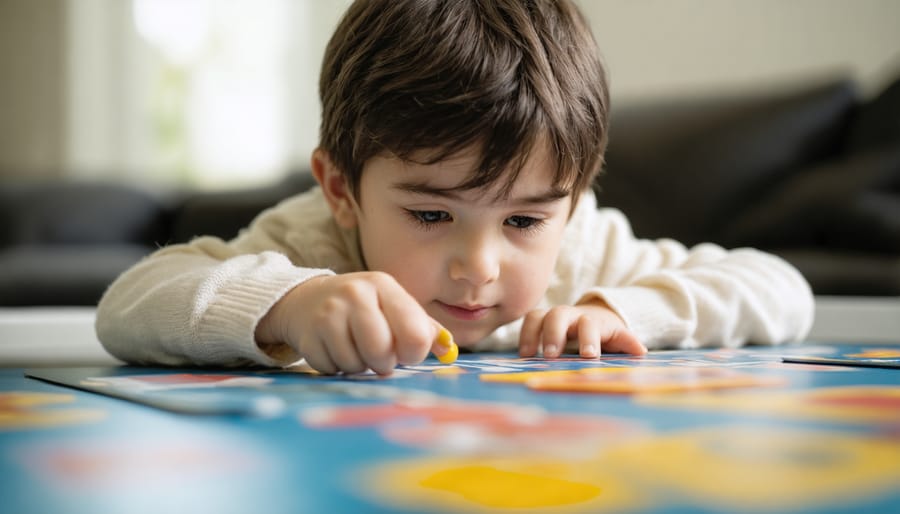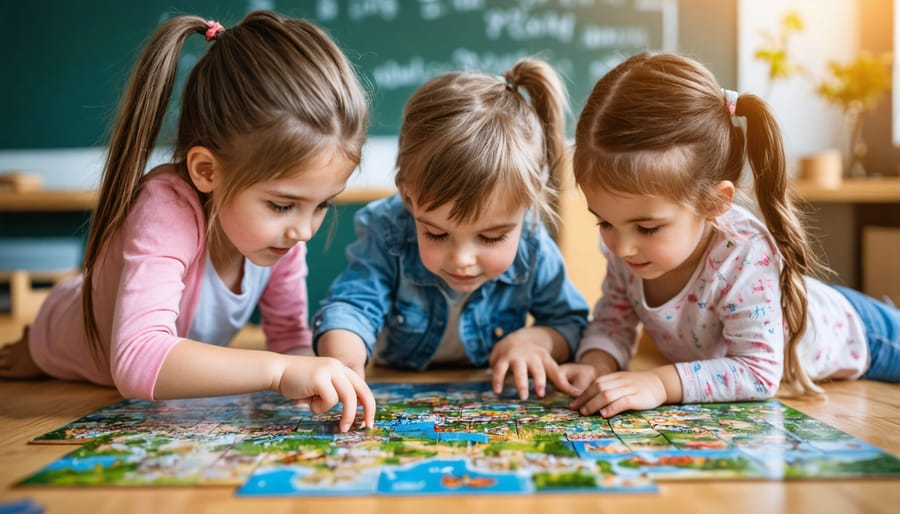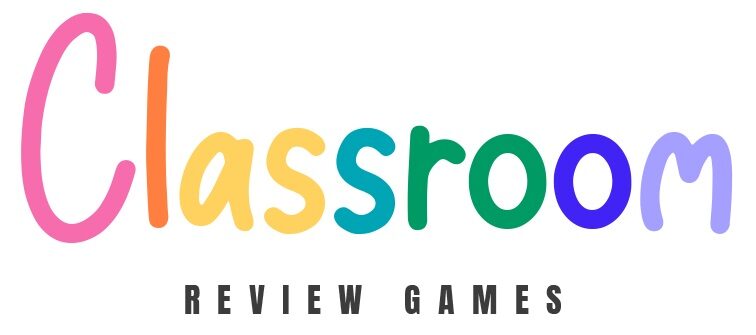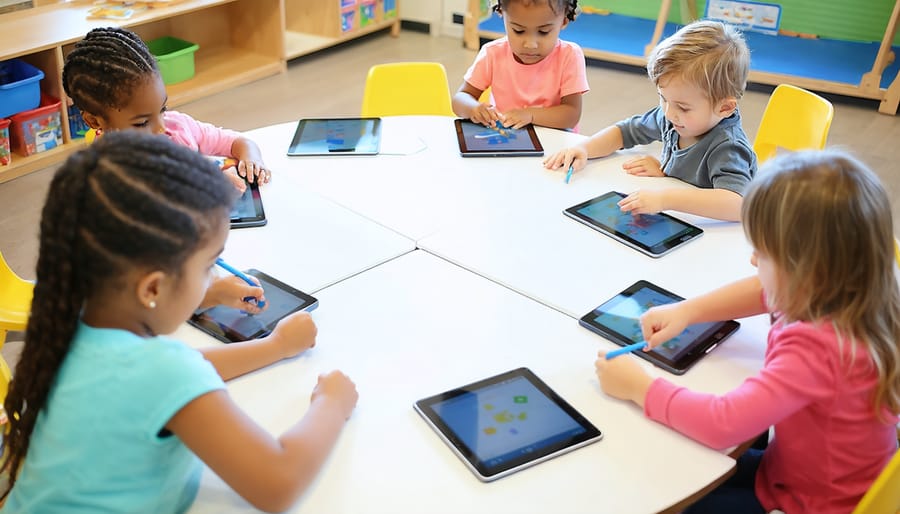Make Your Preschool Lessons Pop with These Game-Changing Digital Activities
Transform your preschool classroom into a dynamic learning hub with educational games that captivate young minds while building essential skills. Interactive digital learning experiences now offer unprecedented opportunities to engage children ages 3-5 in core developmental areas – from literacy and numeracy to social skills and problem-solving.
Recent research shows that preschoolers retain 65% more information when learning through interactive play compared to traditional methods. By combining touchscreen technology with proven early childhood education principles, these games create an immersive environment where children actively participate in their own learning journey.
The magic lies in the perfect balance: structured learning objectives wrapped in playful interfaces that keep young children coming back for more. Whether it’s matching shapes, practicing letter sounds, or solving simple puzzles, today’s educational games adapt to each child’s pace while providing instant, encouraging feedback that builds confidence and competence.
For teachers seeking to modernize their teaching toolkit, these interactive platforms offer customizable options that align with curriculum goals while maintaining the joy and spontaneity essential for early childhood development. The key is selecting age-appropriate games that complement, rather than replace, hands-on classroom activities.
Why Digital Games Work Wonders in Preschool Education
Building Core Skills Through Play
Interactive educational games serve as powerful tools for learning through play, helping preschoolers develop essential skills in engaging ways. These games naturally build fundamental abilities across multiple developmental areas. When children match shapes or complete simple puzzles, they’re strengthening their visual recognition and problem-solving abilities. Games involving counting or basic patterns help establish early math foundations, while interactive storytelling activities boost language development and vocabulary.
Fine motor skills improve as little ones tap, swipe, and interact with game elements. Many educational games also incorporate social elements, teaching turn-taking and cooperation – crucial skills for classroom success. Color recognition, letter identification, and basic concept understanding become natural outcomes of gameplay rather than formal lessons.
The beauty of these games lies in how they make skill-building feel like pure fun. Children remain motivated and engaged while developing critical thinking, memory, and concentration skills, often without realizing they’re learning. This natural approach to skill development creates positive associations with learning that can last throughout their educational journey.
Keeping Young Minds Engaged
Keeping preschoolers engaged requires more than just colorful graphics and fun sounds. The secret lies in creating meaningful interactive learning experiences that tap into their natural curiosity. When games respond to children’s actions with immediate feedback, they create a sense of agency and accomplishment that keeps young minds coming back for more.
Think of it like a conversation – the game “talks,” the child responds, and learning happens naturally through this back-and-forth exchange. Features like lovable characters, progressive challenges, and reward systems work together to maintain interest. When children receive stars, stickers, or friendly encouragement for completing tasks, it builds their confidence and motivation to continue exploring.
The key is finding the sweet spot between challenge and achievement. Games that adapt to each child’s pace prevent frustration while maintaining excitement. Short activities with clear goals work best, as they match preschoolers’ attention spans and give them frequent wins to celebrate. Remember, when children are having fun, they don’t even realize they’re learning!
Setting Up Your Digital Game Station

Essential Equipment and Setup
Setting up interactive educational games in your preschool classroom doesn’t require a complicated tech setup! Here’s what you’ll need to get started:
Basic Equipment:
– A reliable tablet or computer (1-2 devices can work for small groups)
– Stable internet connection
– Good quality speakers for audio feedback
– Protective cases for devices
– Clean, dedicated space for game activities
Optional but Helpful:
– Interactive whiteboard or projector for whole-class participation
– Headphones for individual play sessions
– Storage unit for devices and accessories
– Timer for managing play sessions
Classroom Setup Tips:
– Create a designated “game station” away from high-traffic areas
– Ensure proper lighting to reduce screen glare
– Position devices at child-height level
– Keep charging stations nearby but out of reach
– Have sanitizing wipes ready for shared devices
Remember to:
– Test all games before introducing them to students
– Check device volume levels
– Ensure all safety features and parental controls are activated
– Keep a backup plan ready in case of technical issues
– Label all equipment clearly
– Create simple visual instructions for young learners
With these basics in place, you’ll be ready to transform your classroom into an engaging learning environment where educational games can flourish!
Creating a Game-Friendly Environment
Creating an inviting game space in your preschool classroom doesn’t have to be complicated! Start by designating a specific area where children can engage with educational games without disruption. Choose a well-lit corner away from high-traffic zones to help little ones maintain focus during gameplay.
Arrange comfortable seating options like child-sized chairs, floor cushions, or a soft carpet where kids can sit comfortably. Remember to keep the gaming devices or materials at child height and easily accessible. If you’re using tablets or computers, ensure charging stations are nearby but safely out of reach.
Organization is key! Use labeled bins or shelves to store different types of games and their components. Color-coding can help preschoolers identify and return items to their proper places, promoting independence and responsibility.
Consider creating rotation stations where small groups can take turns with different games. This helps manage resources effectively and ensures every child gets a chance to participate. Display simple visual instructions or game rules using pictures to help children remember how to play independently.
Don’t forget about lighting control! Position screens away from windows to reduce glare, and have adjustable lighting options for different times of day. Keep cleaning supplies handy for regular sanitization of shared equipment, and establish clear cleanup routines that children can follow easily.
Best Interactive Games for Different Learning Areas
Numbers and Counting Games
Numbers and counting games provide an engaging foundation for early math skills. Try the “Number Hunt” game where students search for hidden number cards around the classroom, calling out each number they find. Make it collaborative by having children work in pairs, with one partner giving clues like “warmer” or “colder.”
Another crowd-pleaser is “Counting Creatures,” where students roll dice and move corresponding numbers of small toys or manipulatives. Add a creative twist by using themed counters like dinosaurs or sea animals based on your current learning unit.
For a more active approach, set up “Jump and Count” stations where children physically hop from number to number on floor tiles while counting aloud. This combines gross motor skills with number recognition and sequential counting.
Digital options like interactive counting apps can complement these activities, but remember to keep screen time balanced with hands-on experiences. Create simple number matching games using everyday materials like paper cups and pom-poms, allowing children to match quantities to numerals.
Don’t forget to celebrate progress with sticker charts or special helper roles for students showing improvement in their counting skills.

Letter Recognition and Phonics
Letter recognition games bring phonics to life in your preschool classroom! Start with interactive alphabet matching activities where children can drag and drop letters to their corresponding sounds. Digital letter boards let kids trace letters while hearing their sounds, reinforcing both visual and auditory learning.
Try “Letter Hunt Adventures” where students identify letters hidden in colorful scenes on your classroom tablet or interactive whiteboard. This game can be customized to focus on specific letter sounds your class is currently learning. For group activities, create virtual letter sorting games where children work together to organize letters by their sounds or shapes.
Make it musical with digital alphabet songs that highlight letter-sound relationships. These can be paired with movement activities where children physically act out letter shapes. For more advanced learners, introduce simple word-building games that combine letters to create basic three-letter words.
Remember to celebrate progress with virtual stickers or achievement badges. These small rewards keep young learners motivated and excited about mastering their ABCs. Mix individual and group activities to maintain engagement and accommodate different learning styles.
Social Skills and Teamwork
Interactive educational games offer fantastic opportunities for preschoolers to develop essential social skills and learn the value of teamwork. Games like “Follow the Leader” and “Musical Partners” encourage children to work together while having fun. These activities help little ones practice taking turns, sharing resources, and communicating effectively with their peers.
Digital games with multiplayer options are particularly effective in fostering collaboration. For example, tablet-based puzzle games where children work in pairs to complete a picture or interactive whiteboard activities where teams sort shapes and colors together create natural opportunities for cooperation.
Consider incorporating games like “Circle Time Heroes,” where children work in small groups to complete simple missions, such as matching animal sounds or collecting virtual objects. These collaborative experiences help develop empathy, patience, and leadership skills.
Remember to rotate partners and groups regularly to help children interact with different classmates. Celebrate team successes together and use gentle guidance to help children navigate conflicts that may arise during gameplay. These social interactions become valuable learning moments that prepare preschoolers for future collaborative environments.

Problem-Solving Adventures
Problem-solving games are a fantastic way to nurture critical thinking skills in preschoolers while keeping them engaged and excited about learning. Simple puzzle games like shape sorters and pattern matching activities help little ones develop logical reasoning skills naturally. Try incorporating digital matching games where children pair related objects or complete sequences – these activities strengthen memory and cognitive skills while being incredibly fun!
For hands-on problem solving, set up mini-challenges like building block towers or creating paths for toy cars. These activities encourage children to think creatively and find solutions through trial and error. Digital maze games are particularly effective, as they require children to plan their route and adjust their strategy when they encounter obstacles.
Consider rotating between different types of problem-solving activities throughout the week. Mix digital games with physical puzzles to maintain interest and target various learning styles. Remember to celebrate each success, no matter how small – positive reinforcement helps build confidence and encourages children to tackle more challenging problems. Start with simpler challenges and gradually increase difficulty as your preschoolers develop their problem-solving muscles.
Measuring Success and Adapting Games
Tracking Progress Through Play
Keeping track of your preschoolers’ progress through educational games doesn’t have to feel like a chore! Modern interactive games come with built-in assessment tools that make monitoring both fun and effective. These games can naturally increase student engagement while providing valuable data about each child’s development.
Look for games that offer progress dashboards where you can track specific skills like letter recognition, number sense, and color matching. Many platforms allow you to create individual student profiles, making it easy to spot areas where each child excels or needs extra support.
Consider using simple observation checklists while children play, noting their problem-solving strategies and social interactions. Take quick photos or videos of breakthrough moments – these make great additions to student portfolios and help communicate progress to parents.
Remember to celebrate small wins! Whether it’s completing a puzzle faster or remembering new sight words, each achievement builds confidence and motivation for continued learning through play.
Customizing Games for Your Class
Making games work for every student in your class is easier than you think! Start by observing your students’ interests and learning styles. If some children love dinosaurs, incorporate dinosaur themes into counting games. For students who need extra support, break down complex games into simpler steps or add visual cues.
Consider adjusting the difficulty level by creating different versions of the same game. For example, in a matching game, some students can match colors while others match letters or simple words. Use familiar characters or objects from your classroom to make games more relatable and engaging.
Don’t forget to adapt games for different learning speeds. Some students might need more time to respond, while others benefit from faster-paced activities. Add movement elements for active learners by incorporating jumping, clapping, or dancing into number games.
Remember to celebrate small wins! Create achievement levels that match your students’ abilities, and use stickers or special helper roles as rewards. Regular feedback from your students will help you fine-tune games to keep them fun and educational for everyone.
Interactive educational games have proven to be invaluable tools in creating engaging and effective learning environments for preschoolers. By incorporating these digital resources into your classroom routine, you’re not just making learning fun – you’re helping build essential foundational skills that will serve your students throughout their educational journey.
Remember that successful implementation is all about balance and thoughtful selection. Choose games that align with your curriculum goals, maintain age-appropriate content, and offer flexibility in difficulty levels. The best part? You don’t need to be a tech expert to get started! Start small with one or two games, and gradually expand your digital toolbox as you and your students become more comfortable.
Don’t forget to regularly switch up the games to maintain excitement and engagement. Monitor your students’ progress and adjust your approach based on their responses and learning outcomes. The beauty of educational games lies in their ability to provide immediate feedback while keeping young minds actively engaged in the learning process.
By embracing these interactive tools, you’re creating a dynamic classroom environment that speaks to today’s tech-savvy youngsters. Your enthusiasm for these new teaching methods will naturally transfer to your students, making the learning experience more enjoyable for everyone involved. So go ahead, take that first step toward transforming your classroom into an interactive learning playground!


